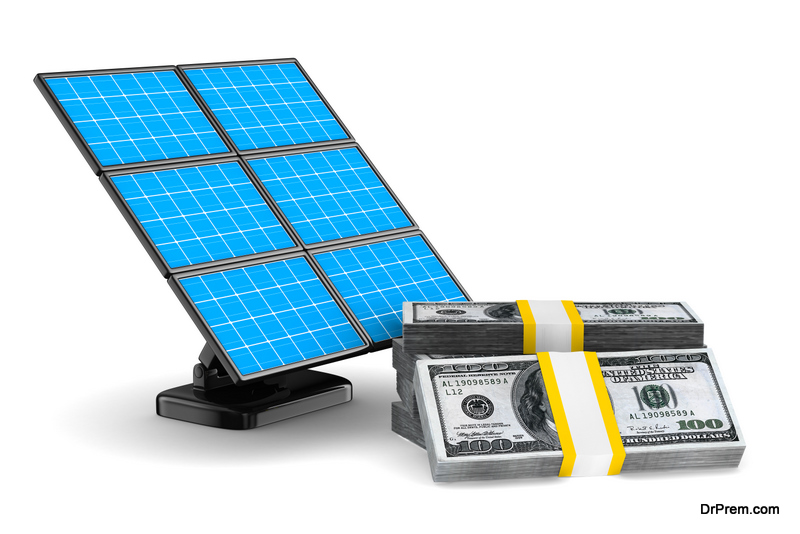Solar energy is becoming a popular choice for homeowners looking to reduce their electricity bills and minimize their carbon footprint. However, the initial cost of installing solar panels can be high, making it seem out of reach for many. Fortunately, various incentives are available to help make solar energy more affordable and accessible.

This article explores different types of home solar incentives, explaining how they work and how they can significantly reduce the cost of going solar.
Understanding Solar Incentives
Solar panel incentives are financial benefits provided by governments, utilities, or other organizations to encourage the adoption of solar energy. These incentives come in various forms, including tax credits, rebates, and grants, each designed to lower the upfront and ongoing costs of installing and maintaining solar energy systems.
The most common types of solar incentives include:
1. Federal Solar Tax Credit (Investment Tax Credit – ITC)

One of the most significant incentives for solar energy in the United States is the Federal Solar Tax Credit, also known as the Investment Tax Credit (ITC). This incentive allows homeowners to deduct a percentage of their solar installation costs from their federal taxes. Currently , the ITC offers a 26% tax credit for systems installed through the end of 2022. However, this percentage is set to decrease in the coming years, so homeowners interested in maximizing their savings should consider acting soon.
2. State and Local Incentives

In addition to federal incentives, many states and local governments offer their own programs to encourage solar adoption. These can include tax credits, rebates, and property tax exemptions. For example, California’s Solar Initiative provides rebates to homeowners who install solar panels, significantly lowering the cost of their systems. Meanwhile, states like New York offer property tax exemptions for the added value solar panels bring to a home, ensuring homeowners don’t face higher property taxes due to their investment in renewable energy.
3. Utility Company Incentives
Utility companies often provide incentives to encourage solar energy use. These can include rebates for solar installations, performance-based incentives, or net metering programs. Net metering allows homeowners to sell excess electricity generated by their solar panels back to the grid, earning credits that can offset future energy bills. This not only makes solar energy more affordable but also creates a potential source of income for homeowners.
Breaking Down the Costs with Solar Rebates and Grants
While tax credits are a significant way to reduce Oregon solar costs , rebates, and grants can further ease the financial burden. These incentives often come from state and local governments or utility companies and can be applied directly to the cost of your solar energy system.
Solar Rebates
Solar rebates are a type of financial incentive that reduces the initial cost of a solar energy system. For example, if a state offers a USD$1,000 solar rebate program for solar installations, this amount is deducted from the total system cost, making the upfront expense more manageable. Some rebates are available immediately upon installation, while others may require a waiting period.
Grants for Solar Energy
Grants are another form of financial aid that does not need to be repaid. These are often available to low-income households or specific communities to ensure that solar energy is accessible to everyone. For instance, the Rural Energy for America Program (REAP) provides grants to agricultural producers and rural small businesses to install renewable energy systems, including solar. By leveraging grants, eligible homeowners can significantly reduce their out-of-pocket costs.
Financing Options: Making Solar Affordable Over Time
Even with incentives like tax credits, rebates, and grants, the remaining cost of solar panels can still be substantial. Fortunately, several financing options are available to help spread out these costs, making solar energy more accessible to a broader range of homeowners.
Solar Loans
One of the most common financing methods is a solar loan, which allows homeowners to borrow money to cover the cost of their solar installation. These loans can be obtained through banks, credit unions, or specialized solar financing companies. Solar loans often come with lower interest rates than traditional loans, and the monthly payments can be offset by savings on energy bills. Over time, the savings generated by solar energy can cover the cost of the loan, making solar a financially viable option.
Solar Leases and Power Purchase Agreements (PPAs)

Another option is to lease solar panels or enter into a Power Purchase Agreement (PPA). With a solar lease, homeowners pay a fixed monthly amount to rent the solar panels, while a PPA involves paying for the electricity generated by the panels at a set rate. Both options require little to no upfront cost, allowing homeowners to benefit from solar energy without the financial burden of ownership. However, the long-term savings may be less than with a solar loan, as the homeowner does not own the panels outright .
Community Solar Programs: A Group Effort
For those who cannot install solar panels on their property, community solar programs offer a way to participate in solar energy production and benefit from the associated savings. But what is it about ? Community solar involves multiple participants investing in a shared solar project, often located off-site. Each participant owns a portion of the energy produced, which is then credited to their electricity bill.
How Community Solar Works
In a community solar program, individuals can buy or lease a share of a larger solar array. The electricity generated is fed into the local grid, and participants receive credits on their utility bills based on the amount of energy their share produces. This approach makes solar energy accessible to renters, those with shaded roofs, or homeowners who cannot afford the full cost of a solar system.
Benefits of Community Solar
Community solar offers several benefits, including reduced energy costs, environmental impact, and support for renewable energy without needing personal solar installations. Additionally, participants are protected from the responsibilities of maintaining the solar panels, as the project operator handles all upkeep.
Net Metering: Selling Back Your Solar Energy
Net metering is a crucial policy that allows homeowners with solar panels to sell excess electricity back to the grid. This not only helps reduce the overall cost of solar energy but can also provide an additional income stream for homeowners.
How Net Metering Works
When a solar energy system produces more electricity than the home uses, the excess power is sent back to the grid. In return, the utility company credits the homeowner for this surplus energy, which can be applied to future energy bills. This system ensures that homeowners get the full value of the electricity their solar panels generate, even when they produce more than they need.
Advantages of Net Metering

Net metering offers several advantages, including lower electricity bills and the potential to earn credits during peak production times, such as sunny summer months. This can significantly reduce the payback period for a solar energy system, making it a more attractive investment.
Conclusion
Home solar incentives are essential tools for making solar energy more affordable and accessible. By taking advantage of federal, state, and local incentives, as well as financing options and programs like net metering and community solar, homeowners can significantly reduce the cost of going solar Whether through tax credits, rebates, or innovative financing, these incentives make it easier for more people to enjoy the benefits of clean, renewable energy. As solar technology continues to advance and more incentives become available, the dream of affordable solar energy is becoming available. a reality for an increasing number of homeowners.
Article by Community Writer.




